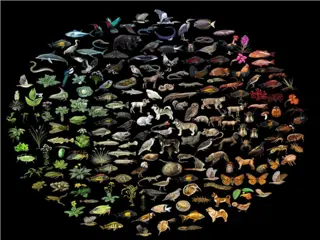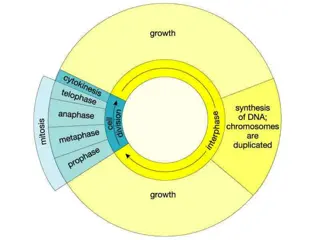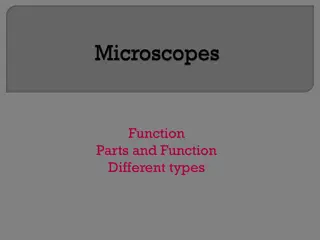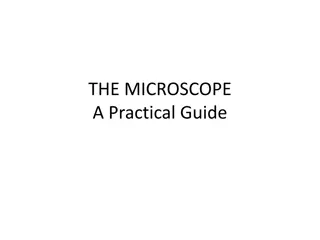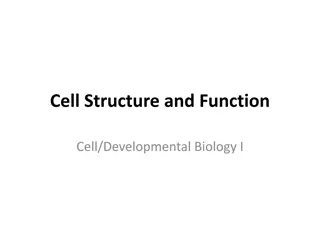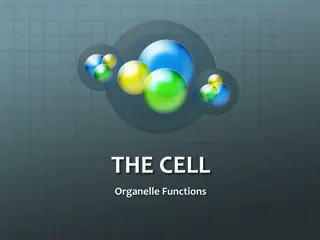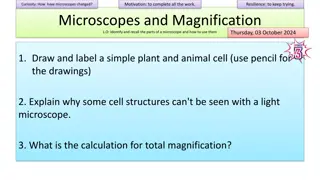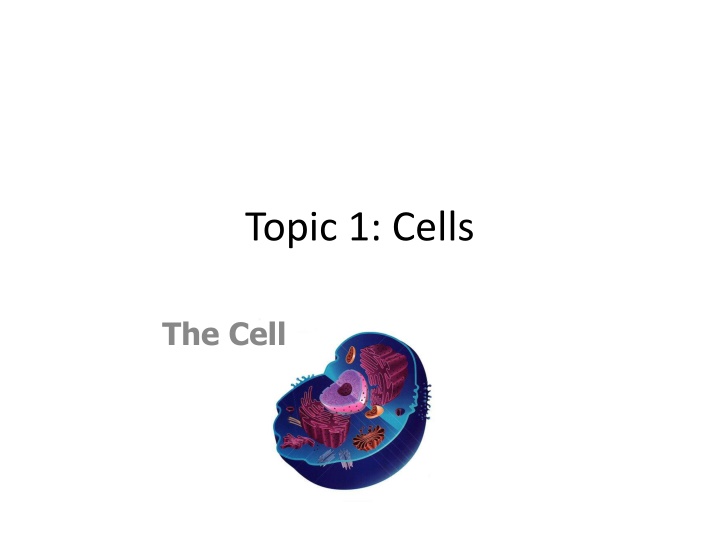
Exploring the Fascinating World of Cells and Microorganisms
Dive into the intriguing realm of cells, from the fundamental Cell Theory stating that all living things are composed of cells to unique examples like muscle cells and fungal hyphae. Discover the diversity of single-celled organisms and peculiar cases such as the giant algae Acetabularia. Delve into complexities like bone structure and the simplicity of a virus, shedding light on the captivating intricacies of cellular biology.
Download Presentation

Please find below an Image/Link to download the presentation.
The content on the website is provided AS IS for your information and personal use only. It may not be sold, licensed, or shared on other websites without obtaining consent from the author. If you encounter any issues during the download, it is possible that the publisher has removed the file from their server.
You are allowed to download the files provided on this website for personal or commercial use, subject to the condition that they are used lawfully. All files are the property of their respective owners.
The content on the website is provided AS IS for your information and personal use only. It may not be sold, licensed, or shared on other websites without obtaining consent from the author.
E N D
Presentation Transcript
Topic 1: Cells The Cell
1.1 Cell Theory All living things are made of cells. Cells are the basic units of life. Cells come only from other cells Since the microscope was introduced biologists have examined the structure of living things. In most cases they have been found to be compose of cells. There are however some strange exceptions to the general cell pattern.
Muscle Cells: very large with many nuclei Muscle Cells called fibers can be very long (300mm). They are surrounded by a single plasma membrane but they are multi- nucleated.(many nuclei). This does not conform to the standard view of a small single nuclei within a cell
Fungal Hyphae: again very large with many nuclei and a continuous cytoplasm The tubular system of hyphae form dense networks called mycelium. Like muscle cells they are multi- nucleated They have cell walls composed of chitin The cytoplasm is continuous along the hyphae with no end cell wall or membrane
Single celled organisms have one region of cytoplasm surrounded by a cell membrane. They can perform all the functions of a differentiated Multicellular organism. This is an image of an amoeba. A single cell protoctista capable of all essential functions. What cell organelles can you see?
Acetabularia This is an example of an algae The cells are some 7 cm long! This seems to contradict theory about cell size. We would expect a large surface area to volume ratio which facilitates a rapid rate of diffusion.
Bone: so much extra cellular material the basic cell structure seems lost There are some cells that secrete material outside of the cell membrane The secretions solidify and dominate the structure In this example the bone cell has secreted concentric layers of 'bone' largely calcium phosphates. The living cell is difficult to distinguish.
A virus is a non-cellular structure Composed of a protein coat and containing either the nucleic acid DNA or RNA Viruses are the smallest and simplest of the microbes. They are a-cellular (not made of cells) and, since they cannot reproduce (or do any of the seven characteristics of life) on their own, they are considered non-living.
They are in fact more like complex chemicals than simple living organisms. Viruses are obligate parasites that can only reproduce inside host cells which get damaged in the process, leading to disease. Viruses are thought to have arisen from lengths of DNA that became separated from their cells.
Bacteriophage These are viruses that infect bacteria rather than eukaryotic cells They are an important tool in genetic engineering Remember this is a protein structure not a cell
Advantages of using a light microscope Light microscopy has a resolution of about 200 nm, which is good enough to see cells, but not the details of cell organelles. Specimens can be seen in color (unlike the monochrome electron micrographs) which includes staining and natural color's. There is a wide field of view to observe the tissue structure (2mm) Living specimens can be observed and therefore their movement can be studied
Advantages of the Electron Microscope The electron microscope has greater resolution (detail) and magnification than the light microscope. Resolution approx = 0.25 nm Magnifications = x 500,000Rather than shinning light through the specimen the EM takes advantage of the short wavelength of the electron.
Rather than shinning light through the specimen the EM takes advantage of the short wavelength of the electron. A beam of electrons is fired from a hot metal wire and focused on the specimen by a series of electromagnets. The image is produced by the same principles as a TV screen. Photographs are then produced (electron micrographs) The Electron Microscope allows the study of the organelles of cell structure.
The transmission electron microscope (TEM) works much like a light microscope, transmitting a beam of electrons through a thin specimen and then focusing the electrons to form an image on a screen or on film. This is the most common form of electron microscope and has the best resolution. The scanning electron microscope (SEM) scans a fine beam of electron onto a specimen and collects the electrons scattered by the surface. This has poorer resolution, but gives excellent 3-dimensional images of surfaces.
Disadvantages of the Electron Microscope Specimens are dead due to preparation technique such as staining, dehydration and placement in a vacuum Artifacts (not natural/artificial feature)can be produced in the specimens by the preparation techniques No movement can be studies as specimens are dead Field of view is very small
Light Cheap to purchase (100 500) Cheap to operate Electron Expensive to buy (over 1,000,000) Expensive to produce electron beams Large and requires special rooms Small and portable Simple and easy preparations Lengthy and complex preparations Preparation distorts material Material rarely distorted by preparation Vacuum is not required Natural color maintained Magnifies objects only up to 2000 times Vacuum is required All images in black and white Magnifies over 500,000 times
Comparison of Size In cell Biology it is most important to be able to provide details of the size of structure observed. SI units are used at all times to provide this information. The following diagram provides an approximation of the sizes of different structures









